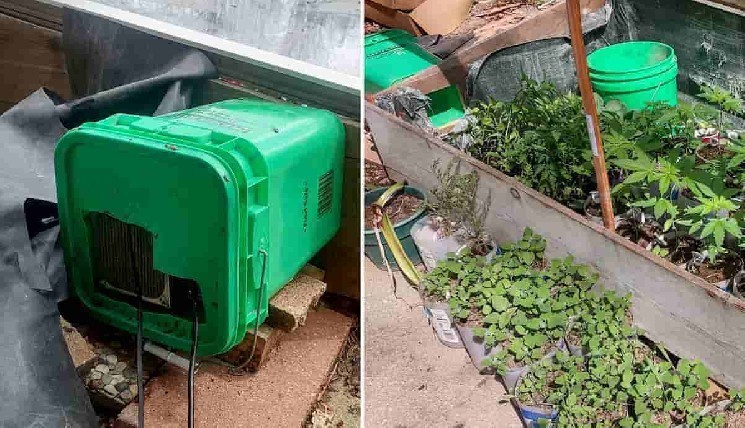Tech enthusiast converts his Bitcoin miner into heater to grow cannabis

With the rapid expansion of the cryptocurrency industry, many people see mining Bitcoin (BTC) as a great way to increase their income, but some of them use mining devices for less conventional ways – including growing cannabis and vegetables.
One of these people is Twitter user Rev.Hodl, who said he had deployed a Bitcoin miner to support the growth of his cannabis and vegetable seedlings during cold months, and he seemed to be very happy with the results, as he shared in a tweet on May 17.
Used an S9 Bitcoin miner to heat a cold frame late winter to early spring to give my cannabis and vegetable seedings a head start on the season. Worked beautifully. #plebminer pic.twitter.com/s1mjZmo7lO
— Rev.Hodl (@HodlRev) May 17, 2023
Various purposes for Bitcoin miner
Interestingly, answering commenters’ questions, Rev.Hodl said he used a Bitcoin miner for other purposes, including warming his house, as a dehydrator, using the surplus solar power at his office grid yurt, and more:
“It’s better than any plain old electric heater. Since I’ve got it, any reason could use electric heat, I’m using a Bitcoin miner. Made a dehydrator, heated my house in the winter, use the extra solar power at my office grid yurt, etc. Since I have it, I need to find good reasons.”
Furthermore, he explained that he had set the miner “between 500-700w to keep temps in 70s while outdoor temps got as low as 20s,” stating that it was “amazing what the little asic computer is capable of.”
Various ways to mine crypto
Earlier in January, crypto YouTuber Drew Vosk examined the various existing methods to mine cryptocurrencies, including hard drive mining, 5G mining, ASIC mining, and Equihash mining, as alternatives to graphics processing units (GPUs), which he considers no longer viable, as there are only four graphics cards today that he believes earn more money than they burn electricity.
At the same time, people have also turned to other, more ecologically acceptable ways to mine digital assets, such as using solar panels and hydro-electricity, the latter of which was witnessed in the example of Virunga National Park in eastern Congo that has used hydroelectric power to mine Bitcoin in a bid to secure funding for the protection of its forests and wildlife.
On top of that, a study has shown that incorporating Bitcoin mining into solar energy systems could improve the grids’ stability and scalability, while simultaneously keeping them cost-effective, thus helping them meet 99% of the end-user demand, as Finbold reported in February.






 Bitcoin
Bitcoin  Ethereum
Ethereum  Tether
Tether  USDC
USDC  TRON
TRON  Dogecoin
Dogecoin  Cardano
Cardano  Chainlink
Chainlink  Bitcoin Cash
Bitcoin Cash  Zcash
Zcash  Stellar
Stellar  LEO Token
LEO Token  Litecoin
Litecoin  Monero
Monero  Hedera
Hedera  Dai
Dai  Cronos
Cronos  OKB
OKB  Ethereum Classic
Ethereum Classic  Tether Gold
Tether Gold  KuCoin
KuCoin  Algorand
Algorand  Cosmos Hub
Cosmos Hub  VeChain
VeChain  Gate
Gate  Dash
Dash  Stacks
Stacks  Tezos
Tezos  IOTA
IOTA  Decred
Decred  TrueUSD
TrueUSD  Theta Network
Theta Network  NEO
NEO  Basic Attention
Basic Attention  Synthetix
Synthetix  Qtum
Qtum  0x Protocol
0x Protocol  DigiByte
DigiByte  Ravencoin
Ravencoin  Nano
Nano  Zilliqa
Zilliqa  Holo
Holo  Siacoin
Siacoin  Numeraire
Numeraire  Enjin Coin
Enjin Coin  Ontology
Ontology  Status
Status  Waves
Waves  Lisk
Lisk  Pax Dollar
Pax Dollar  Hive
Hive  BUSD
BUSD  Steem
Steem  Huobi
Huobi  Bitcoin Gold
Bitcoin Gold  OMG Network
OMG Network  Augur
Augur  NEM
NEM  Ren
Ren